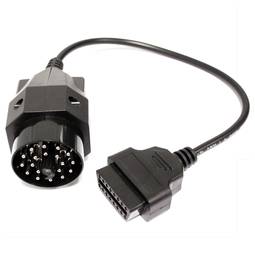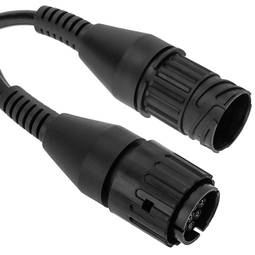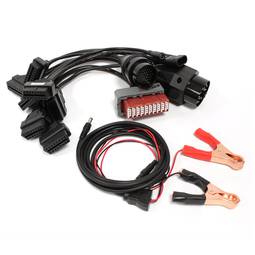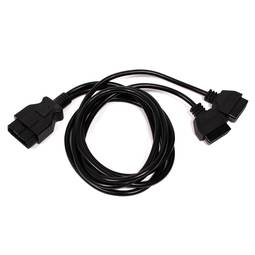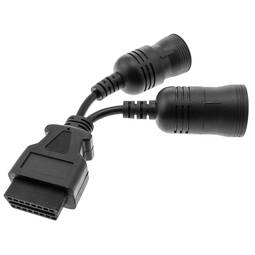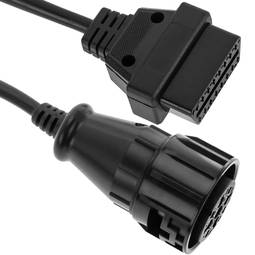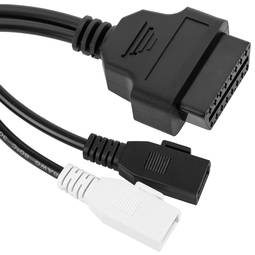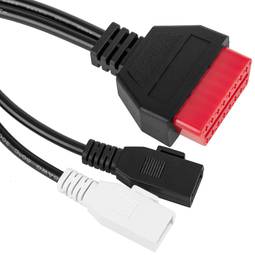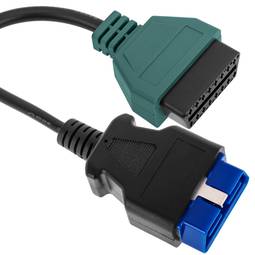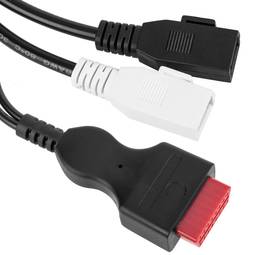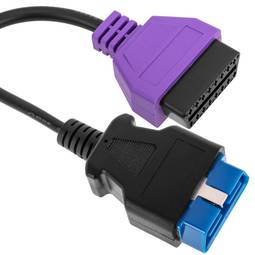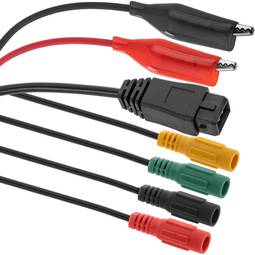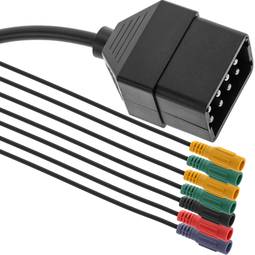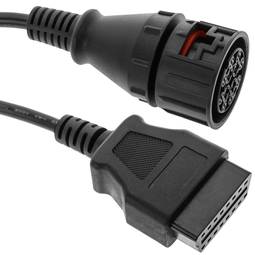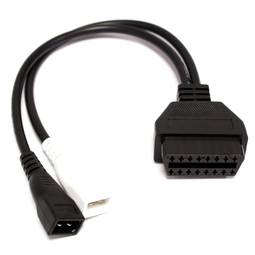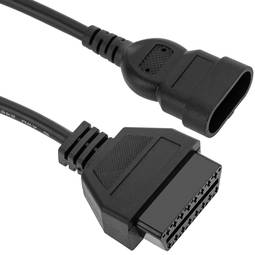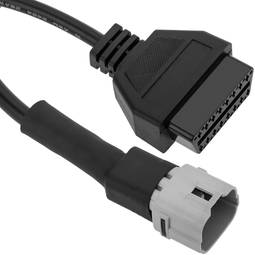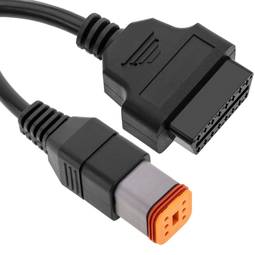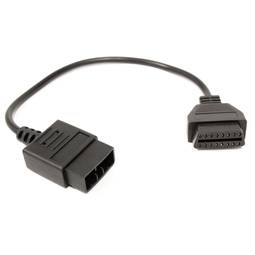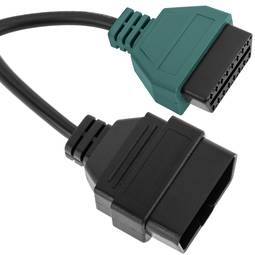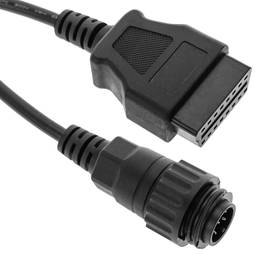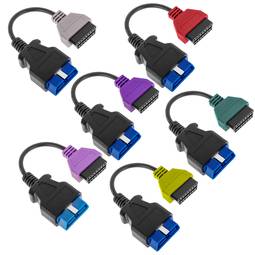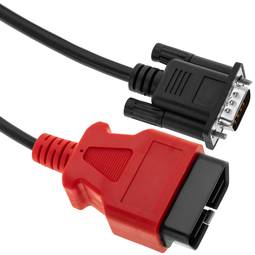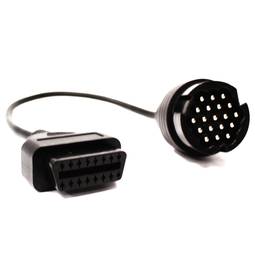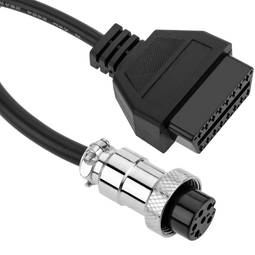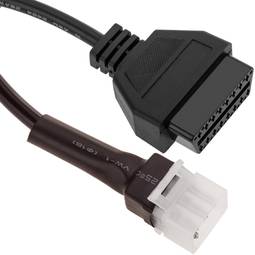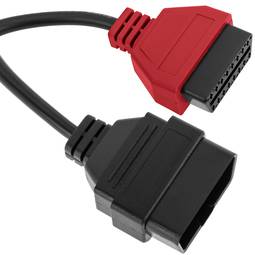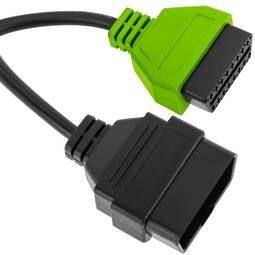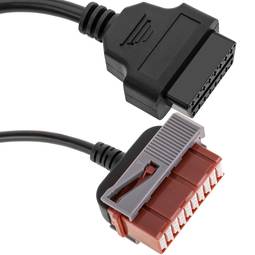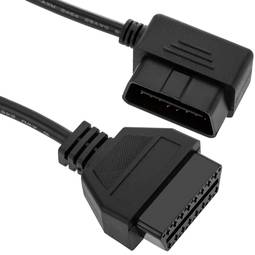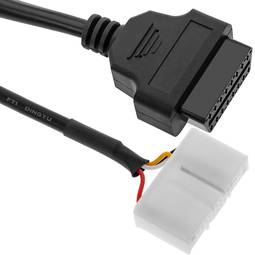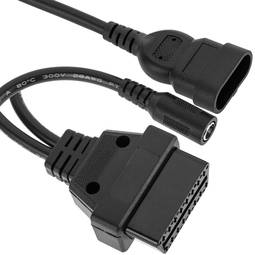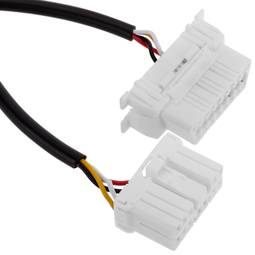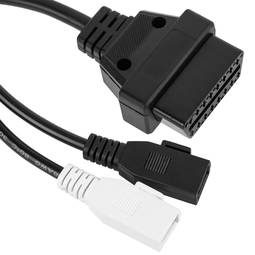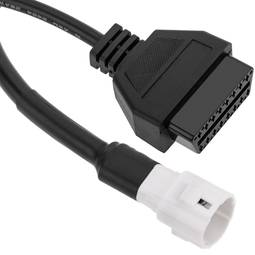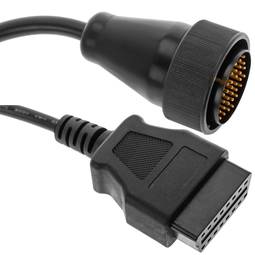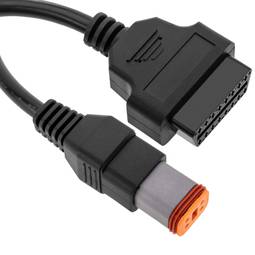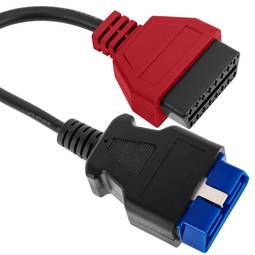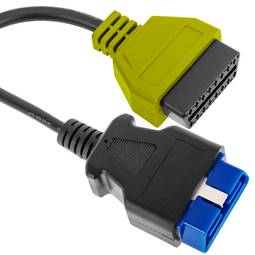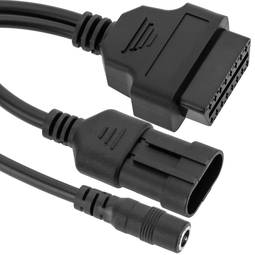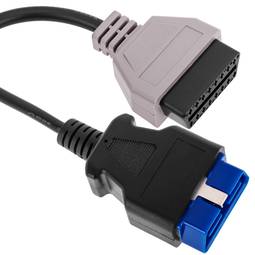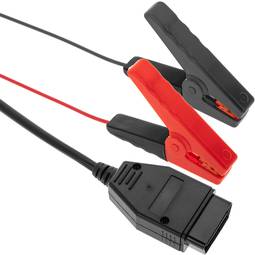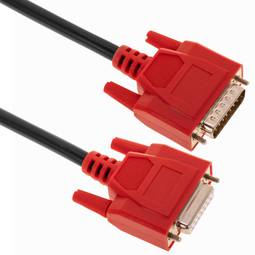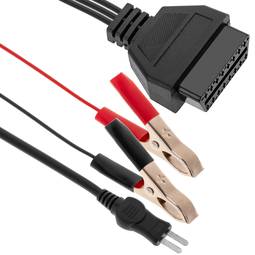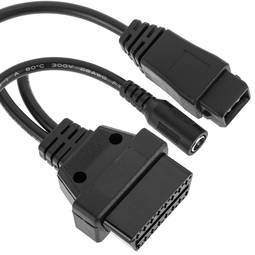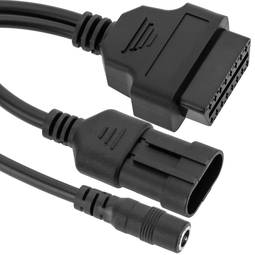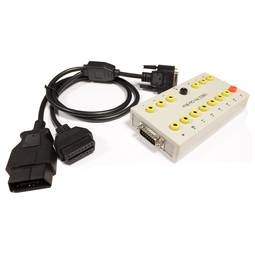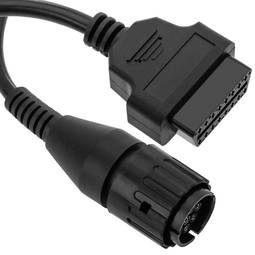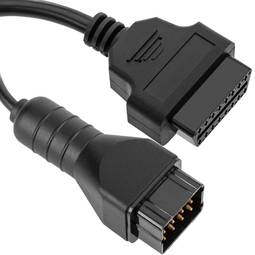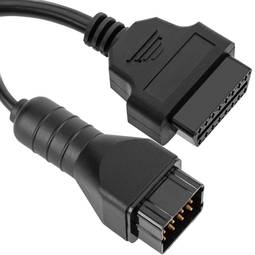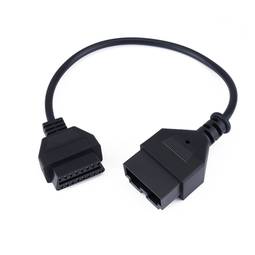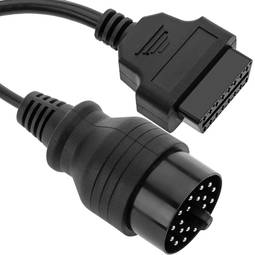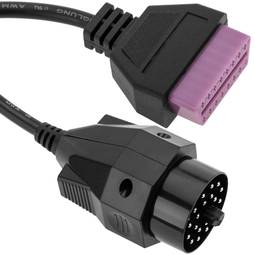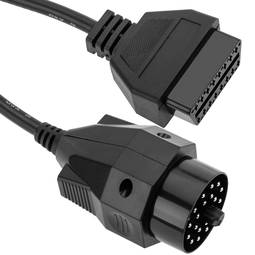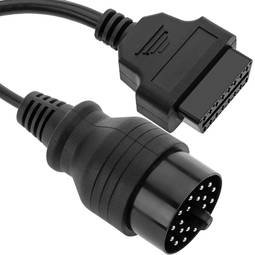OBD OBDII OBD2 EOBD
The acronym OBD On Board Diagnostic mean, or what is, system-board diagnostics. OBD-II connector as standard include for cars sold in the U.S. from January 1, 1996, petrol cars sold in the EU from January 1, 2000, and diesel cars sold in the EU from of January 1, 2003. Cars that have this connector must carry a sticker or plate on the motor that puts" OBD-II Compliant " . Some vehicles may have OBD-II even if manufactured before the above dates. In the EU may also be referred to this as EOBD standard. With appropriate interfaces and cables (available in our catalog) and appropriate software (available online), we obtain a system of monitoring and control different parts of the car.
There are communication protocols up to 5 OBD-II that are implemented by manufacturer: ISO-9141, ISO-14230 (also known as Keyword Protocol 2000), J1850 VPW, J1850 PWM and CAN (ISO-15 765/SAE J2480-). The most common are those based on ISO, which is the protocol implemented by most manufacturers, especially in Europe. To recognize the type of protocol uses a particular model of car, best to check the specifications of your vehicle or find pages of information on the Internet.
The OBD-II implements the DLC (Diagnostic Link Connector) standard defined by the SAE-J1962. J1962 connector is usually found under the dashboard of the driver or passenger, or behind the car's ashtray. Looking at the pinout of the connector can be determined J1962 OBD-II protocol used by the vehicle in question: J1850 VPW (pins 2, 4, 5 and 16 but not 10), ISO-9141 or ISO-14230 (pins 4, 5, 7 and 16. The pin 15 may be or not) and J1850 PWM (pins 2, 4, 5, 10 and 16).
157
Products
-
Sort by: name
-
Sort by: reference
-
Sort by: price
-
Sort by: Registration date
-
Sort by: availability





